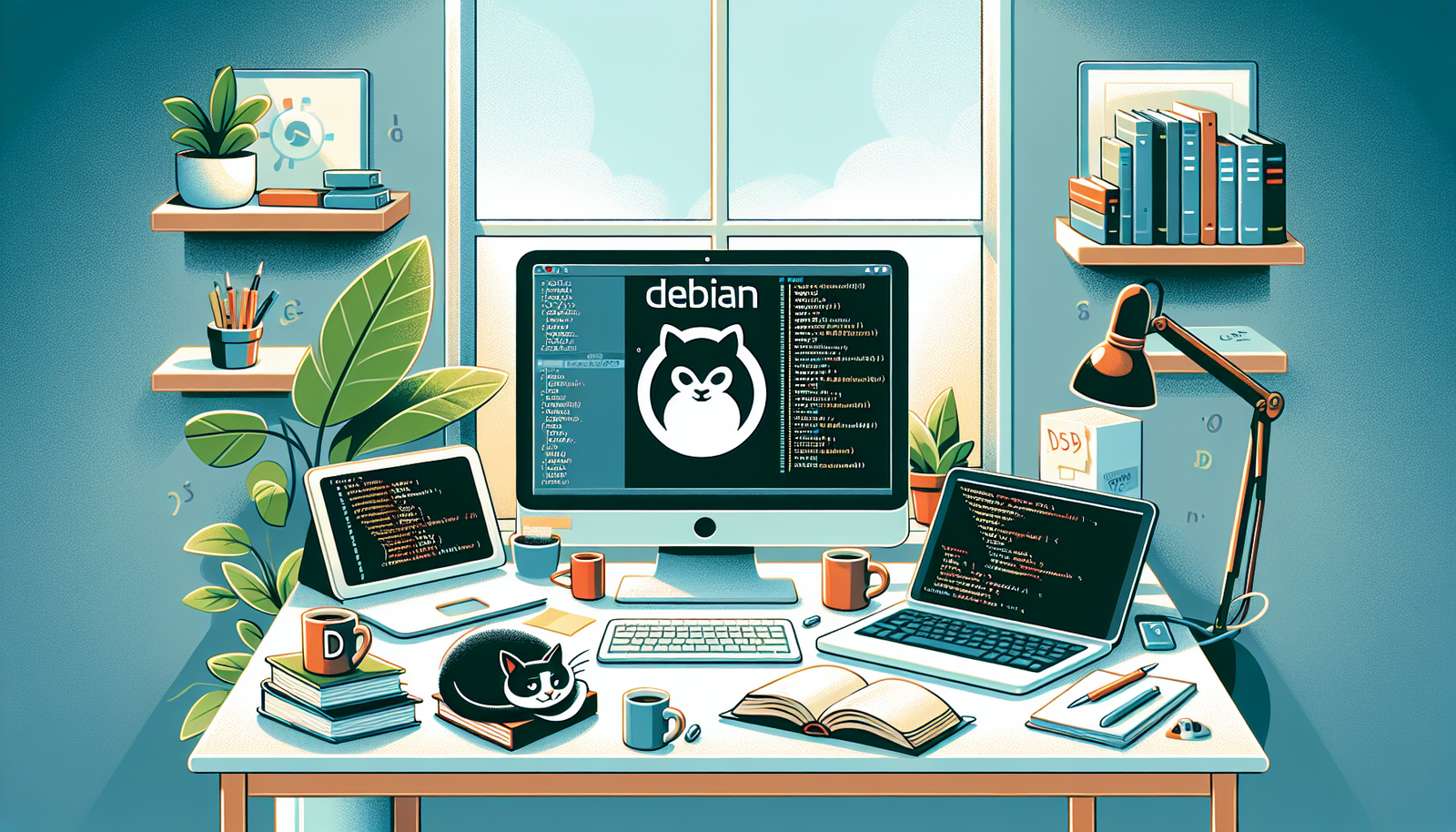How to Set Up a Debian Development Environment
Setting up a development environment is a fundamental step for any programmer or software developer. This guide, crafted by George Whittaker, will walk you through how to establish a Debian development setup, leveraging the stability and versatility of Debian.
Introduction
Debian is known for its stability, security, and extensive software repositories, making it a preferred choice for developers. This article provides a comprehensive overview of creating a Debian development environment, from installation to configuration of essential tools and programming languages, helping you achieve an effective workspace for your projects.
Prerequisites
System Requirements
Ensure your hardware meets the following minimum specifications before you proceed:
- Processor: 1 GHz or faster
- RAM: At least 1 GB (2 GB or more recommended)
- Disk Space: A minimum of 10 GB for the operating system and development tools
Software Requirements
- Debian Installation Media: Download the appropriate Debian ISO from the official Debian website.
- Basic Understanding of the Linux Command Line: Familiarity with command-line operations will assist throughout the process.
Installing Debian
Downloading the Debian ISO
Navigate to the Debian download page and select the version that suits your requirements, with the Stable version being the most recommended for reliability.
Creating a Bootable USB
To install Debian, create a bootable USB drive. You can use tools such as:
- Rufus (Windows)
- balenaEtcher (Cross-platform)
- dd command (Linux)
Steps for Using balenaEtcher:
- Download and install balenaEtcher.
- Insert your USB drive (ensure data is backed up as this will erase all content).
- Open balenaEtcher, select the downloaded Debian ISO, choose the USB drive, and click “Flash.”
Installation Process
- Booting from USB: Restart your computer and boot from the USB drive (usually by pressing F2, F12, or Del during startup).
- Selecting Installation Options: Choose either the graphical or text-based installer; the graphical installer is recommended for beginners.
- Partitioning the Disk: Decide between guided partitioning (recommended for beginners) or manual partitioning.
- User Account Setup: Create a user account and password, which are necessary to access the system later.
- Finalizing the Installation: Complete the on-screen prompts, remove the USB drive, and reboot your system.
Configuring the System
Updating the System
After logging into your new Debian setup, it’s essential to update your package list and install any available upgrades.
sudo apt update
sudo apt upgrade
Installing Essential Development Tools
Debian’s package manager simplifies the installation of development tools. Here’s how to install some essential tools:
-
GCC (GNU Compiler Collection):
sudo apt install build-essential -
Make:
sudo apt install make -
CMake:
sudo apt install cmake
- Git:
sudo apt install git
Setting Up a Code Editor/IDE
Choosing the right code editor can greatly enhance productivity. Some popular options include:
-
Visual Studio Code:
sudo snap install code --classic -
Atom:
sudo apt install atom -
Vim:
sudo apt install vim
Configure your editor to streamline your workflow.
Installing Programming Languages
Debian supports a range of programming languages. Below are installation steps for some popular choices.
Python
sudo apt install python3 python3-pip
Setting Up a Virtual Environment
Utilize virtual environments to manage project dependencies.
pip3 install virtualenv
virtualenv myenv
source myenv/bin/activate
Node.js
sudo apt install nodejs npm
mkdir mynodeapp
cd mynodeapp
npm init -y
Other Languages
-
Java:
sudo apt install default-jdk -
Ruby:
sudo apt install ruby-full
Setting Up Database Management
Choosing a Database System
Select a database system based on your project needs:
- MySQL
- PostgreSQL
- SQLite
Installation Steps
For MySQL installation:
sudo apt install mysql-server
Secure MySQL installation:
sudo mysql_secure_installation
Testing the Development Environment
Creating a Sample Project
Create a simple Python web application using Flask to verify your setup.
-
Install Flask:
pip install Flask -
Create a Basic Application:
Create a file namedapp.pyand add the following content:from flask import Flask app = Flask(__name__) @app.route('/') def hello_world(): return 'Hello, World!' if __name__ == '__main__': app.run(debug=True) -
Run the Application:
python app.py
Open a web browser and go to http://127.0.0.1:5000/ to see your application in action.
Best Practices
Version Control with Git
Utilizing Git for version control is crucial in managing changes and collaboration.
git init
Regular Backups
Regularly back up your work to avoid data loss.
Documentation of the Development Process
Maintain clear documentation of your code and development processes for future reference.
Troubleshooting Common Issues
Installation Problems
For installation issues, reference Debian documentation or community forums.
Package Dependency Issues
Use this command to fix broken packages:
sudo apt --fix-broken install
Environment Configuration Errors
Double-check configuration files to ensure all paths and dependencies are correctly set.
Conclusion
Setting up a Debian development environment can be straightforward if you follow the outlined steps. With a properly configured setup, you are equipped to embark on your development projects effectively—be it personal or collaborative.

